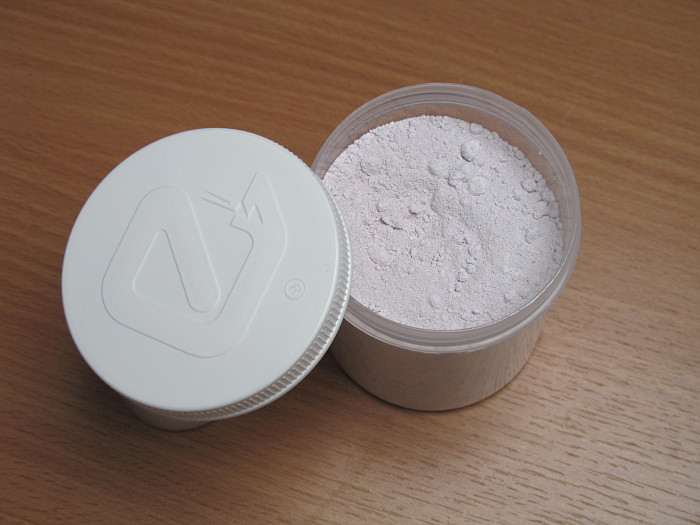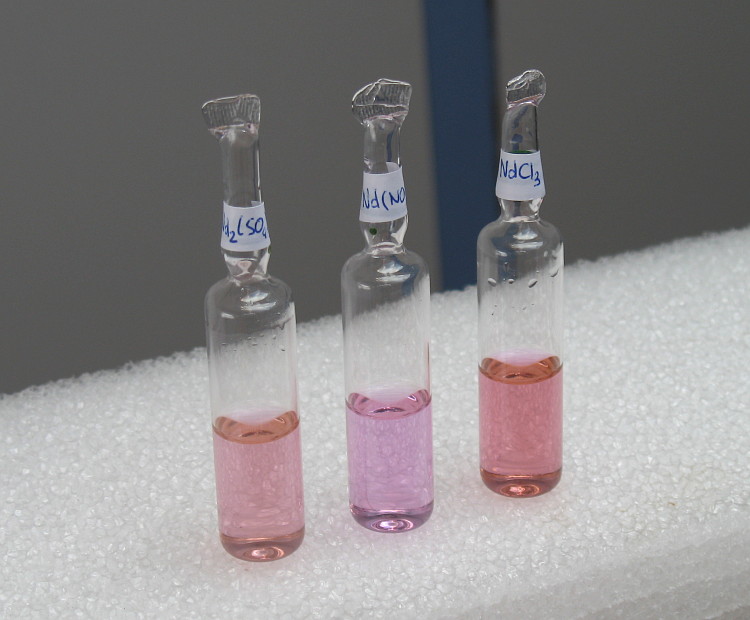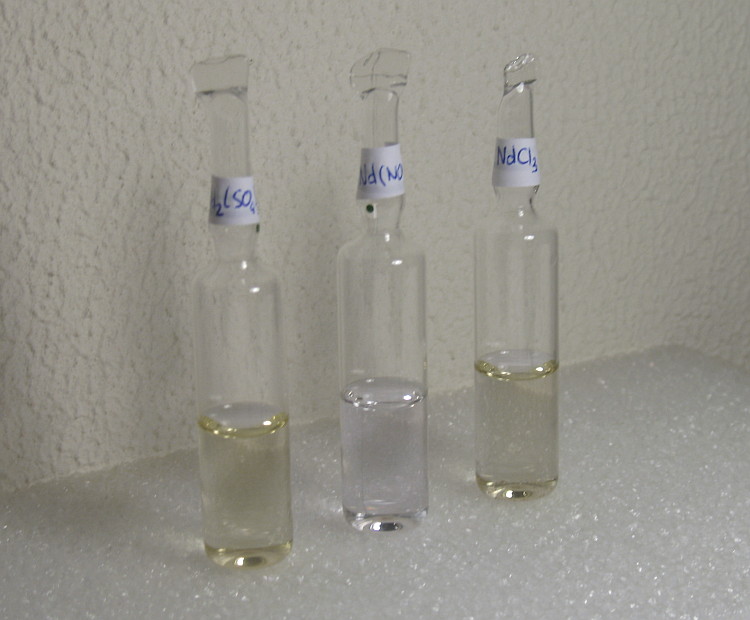Acid and Basic Sulphates of Neodymium and Praseodymium. By Camille Matignon (Compt. rend., 1902, 134, 657—660).—
The neodymium hydrogen sulphate, Nd(HS04)3 or Nd203,3S03,3H2S04, produced either by evaporating down a solution of the neodymium salt of a volatile
acid with excess of sulphuric acid or by dissolving the normal sulphate in the boiling reagent and allowing the solution to cool, crystallises in
long, silky, deliquescent, pink needles, which have an oblique extinction inclined at 12° to the principal axis. This
form, however, rapidly becomes hydrated and changes into an aggregate of small, anisotropic crystals ; finally, the normal salt with 8H20 is obtained
mixed with excess of dilute sulphuric acid. One hundred parts of boiling concentrated sulphuric
acid dissolve 1'30 parts of the acid salt. The basic neodymium sulphate, (NdO)2S04 or Nd203,S03, obtained by gently igniting the normal salt, is an
insoluble, amorphous, pink powder stable at 1000°.
From : The metals of the rare earths By James Frederick Spencer (1915)
Neodymium Sulphate, Nd2(SO4)3,8H2O, is obtained by crystallising a solution of the oxide in sulphuric acid.267 It forms red monoclinic prisms
isomorphous with the corresponding sulphates of erbium, yttrium, and praseodymium.6s7 It is moderately
soluble in water; 100 grams of water dissolve the following weights of neodymium sulphate, calculated as anhydrous salt:—
Temperature . . . . o° 16° 3o° 5o° 8o0 1oo°
Grams 9-5 7-1 5-1 3-6 27 2-25.
An acid sulphate, NdH3(SO4)3l is formed in light rose-coloured silky needles in the same way as the corresponding praseodymium compound.446-6ss-623 A
basic sulphate, (NdO)2 SO4, is obtained by heating the normal sulphate.633-a23
The double sulphate Nd2(SO4)3,Cs2SO4,3H2O is formed in lavender-coloured crystals by mixing solutions of the two sulphates and crystallising.6s9
|
















